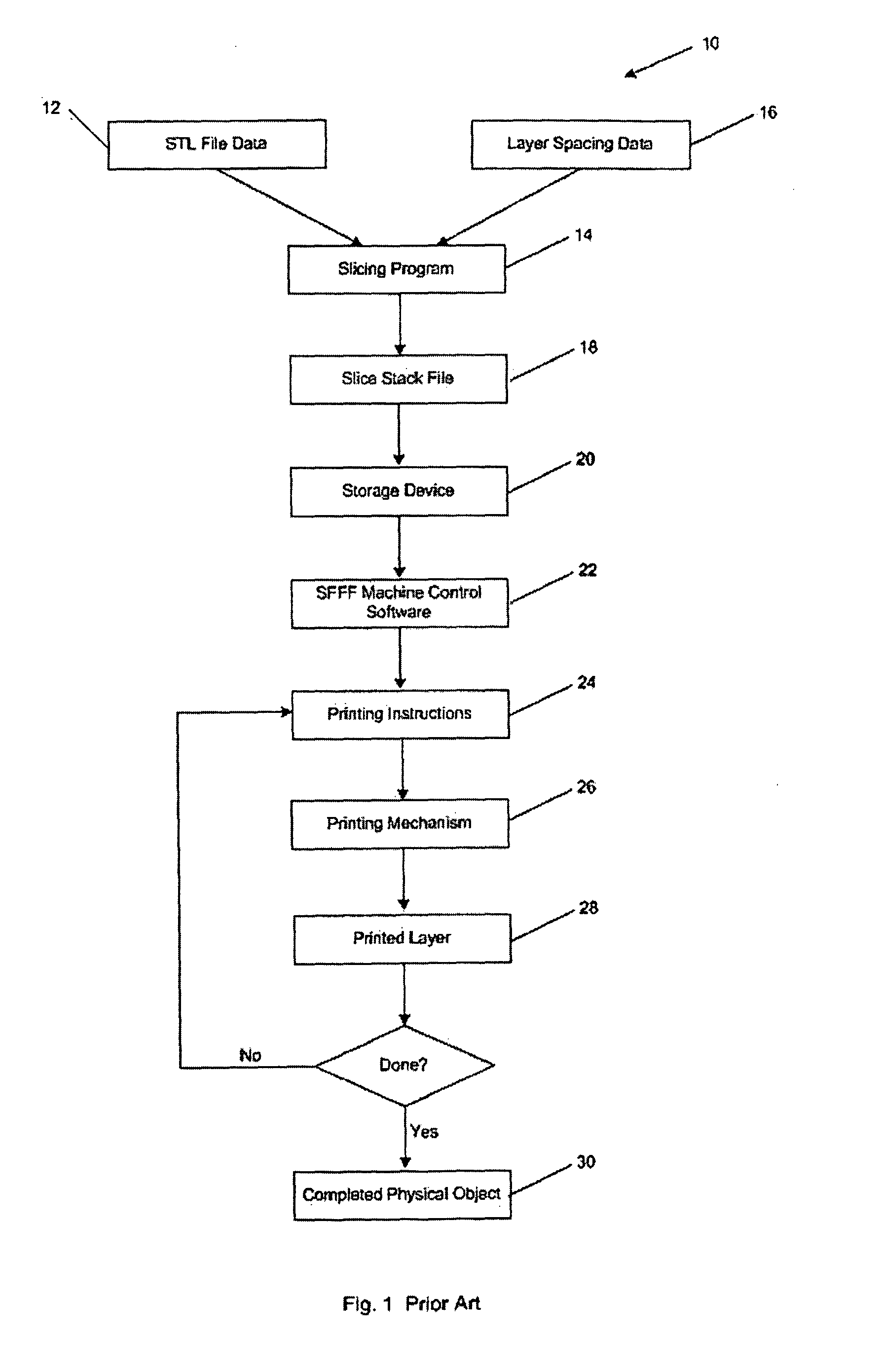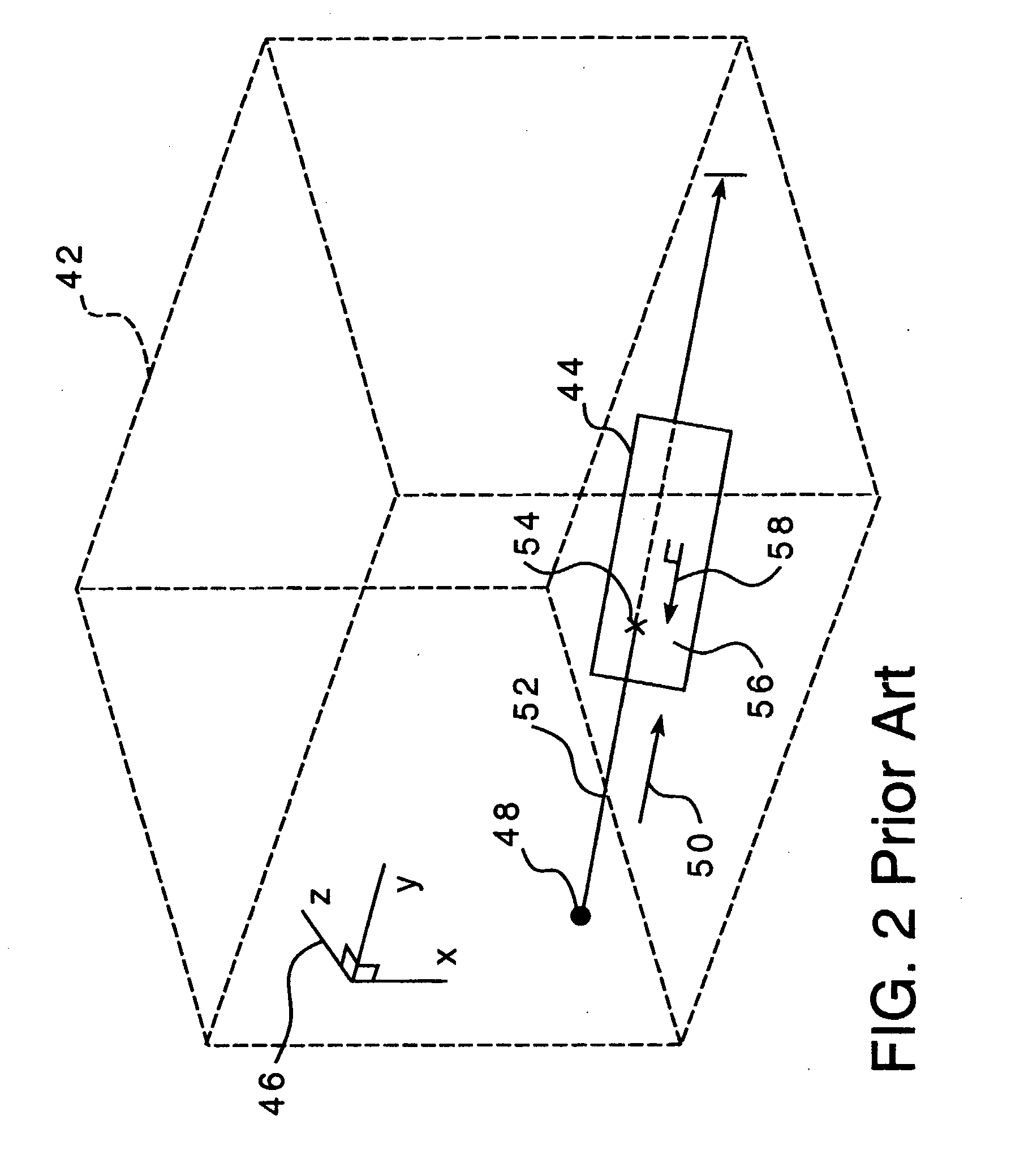Three-Dimensional Data Extraction Using Ray Casting
a technology of ray casting and three-dimensional data, applied in the field of solid freeform fabrication, can solve the problem of reducing the amount of memory resources that are needed, and achieve the effect of less precision, greater precision, and variable precision of detail
- Summary
- Abstract
- Description
- Claims
- Application Information
AI Technical Summary
Benefits of technology
Problems solved by technology
Method used
Image
Examples
Embodiment Construction
[0052]In this section, some preferred embodiments of the present invention are described in detail sufficient for one skilled in the art to practice the present invention. It is to be understood, however, that the fact that a limited number of preferred embodiments are described herein does not limit the scope of the present invention as set forth in the appended claims to such embodiments.
[0053]FIGS. 3A-B are presented to aid in the understanding the flow charts presented in this section. These figures present a key to the shapes and symbols used in those flow charts. In these figures, the text appearing within the shapes describes the function of the shape. The shapes and symbols are consistent with those identified in ISO standard 5807-1985. In the flow charts, this text is replaced with text that describes the particular functions or characteristics of the individual step or structure the shape is representing within a particular flow chart.
[0054]Referring to FIG. 3A, the first ...
PUM
 Login to View More
Login to View More Abstract
Description
Claims
Application Information
 Login to View More
Login to View More - R&D
- Intellectual Property
- Life Sciences
- Materials
- Tech Scout
- Unparalleled Data Quality
- Higher Quality Content
- 60% Fewer Hallucinations
Browse by: Latest US Patents, China's latest patents, Technical Efficacy Thesaurus, Application Domain, Technology Topic, Popular Technical Reports.
© 2025 PatSnap. All rights reserved.Legal|Privacy policy|Modern Slavery Act Transparency Statement|Sitemap|About US| Contact US: help@patsnap.com



